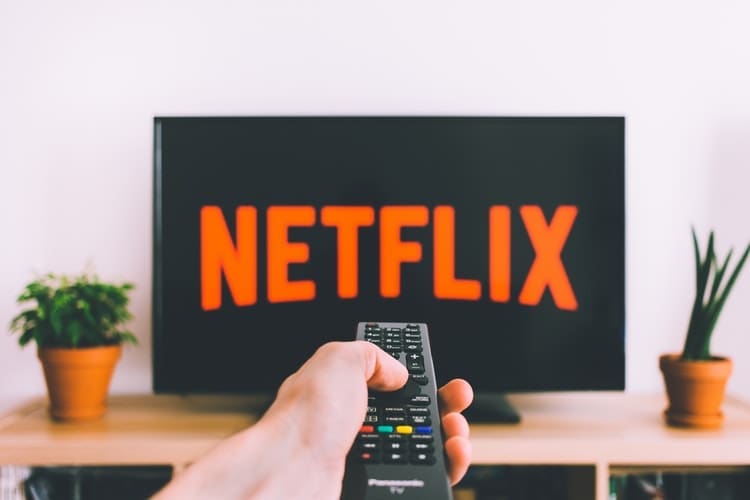In the mood for a movie? There’s no need to go out and buy a DVD or venture to the theater anymore—just load up Netflix and you’re good to go. Want to spruce up your wardrobe? You can rely on a subscription service to deliver all the attire you need, right to your doorstep. Businesses are cashing in and offering subscription services for pretty much everything these days.
The subscription economy grew by over 100% between 2013 and 2018, with 15% of all online shoppers in the United States signing up to at least one subscription service between 2017 and 2018. And who can blame them? Rather than spend time and effort traipsing to a store, you can have everything you need delivered directly to your door. On top of this, many subscription services often work out cheaper too.
But this convenience and affordability could be increasing a hidden cost. America’s couch potato problem costs the country a whopping $117 billion a year, putting a serious drain on the economy and health services. While subscription services cannot be solely to blame for this, the huge spike in subscription services could be exacerbating an already chronic health issue.
Netflix is fuelling the stay-at-home culture
The undisputed king of subscription services is Netflix. Everyone from your grandma to your dog has a Netflix subscription, and, with 139 million global subscribers, it outdoes its closest competitor Spotify by more than 40 million. But there is evidence that its popularity is at the detriment of the film industry, with Netflix’s rise in profile coinciding with a drop in moviegoers. Statistics from Box Office Mojo found that admissions to theatres in the US and Canada fell by 5.8% in 2017, the lowest figures for 25 years. One of the major reasons cited for this slump? You guessed it—Netflix.
Not only is watching Netflix at home more convenient, but it’s also far cheaper than going to the movies. The average cost of a theater ticket in the US is now $8.97, to say nothing of the extortionate price of snacks and tickets for the whole family. Yet, for just under $13 a month, families can access a host of content online. Netflix is even stepping on the toes of the film industry by releasing original movies—you just have to look at the runaway success of Bird Box and the Oscar-winning Roma to see the potential for direct-to-consumer movies. Some commentators even believe this could be the blueprint for future blockbusters, further cementing the stay-at-home culture subscription services seem to be engendering.
It’s not just the entertainment industry creating this culture, however. Subscriptions to fashion retailers rose in popularity by 20% in 2018 as brick and mortar stores closed at a rapid rate, while the huge success of food subscription services is now encouraging more people than ever to stay at home. Subscription brands know how convenient their services are and play on this. Food company Seamless faced backlash when they launched an advertising campaign with the slogan: “Satisfy your craving for zero human contact.” While clearly tongue-in-cheek, actively encouraging customers to stay at home is worrying in light of America’s couch potato epidemic and the repercussions stemming from it.
Subscriptions can encourage us to be more healthy
However, it would be wrong to say that this industry is designed to fuel inactivity. In fact, businesses often encourage us to be more active or, at the very least, a little healthier. Despite keeping us at home, food subscription boxes can encourage wiser food decisions. Delivering all of the ingredients we need to make restaurant-quality meals at home, companies like Hello Fresh or Blue Apron are motivating us to cook a variety of nutritious meals. This is surely more desirable than ordering take-out or sticking to the same two recipes on rotation.
As well as encouraging us to regularly cook, food subscription boxes can also inspire us to share our orders and socialize with others. Cheese subscription boxes, for instance, are perfect for cheese lovers wanting to enjoy wine and cheese nights with friends or family. They also encourage us to broaden our palate, with brands like The Cheese Geek even promising that they will never deliver the same cheese twice to subscribers. Another great example of this type of service can be seen with cocktail subscription boxes. Typically including enough alcohol for two, Saloon boxes educate subscribers and encourage us to try new things by teaching us how to make different cocktails.
Fitness brands are also capitalizing on the subscription box craze. By delivering everything we need to work out, from fitness gear and supplements to gym apparel and snacks, they prove that claiming all subscription boxes turn people into couch potatoes is simply untrue. Meanwhile, other monthly deliveries provide hands-on science and art projects for kids, and you can even get a kit filled with everything required for a camping trip.
Whether subscription services are to blame for inciting lazy lifestyle choices is clearly not a black-and-white issue. While they can indeed satisfy our cravings for convenience, it is also evident that they can fuel activity too, both individually and with others.
Cover Image credits





